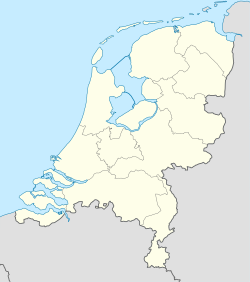Scharl, Netherlands
In today's world, Scharl, Netherlands is a relevant topic and of growing interest to a wide range of people. Whether it is everyday life, politics, technology or any other field, Scharl, Netherlands plays a crucial role in the way we live and how our environment evolves. As society advances and circumstances change, it is essential to stay informed and reflect on Scharl, Netherlands, both in its current context and its historical relevance. In this article, we will delve into the fascinating world of Scharl, Netherlands and explore its various aspects and implications for our daily lives.
Scharl
Skarl | |
|---|---|
Village | |
 Scharl Bellfray | |
 Location in the former Nijefurd municipality | |
| Coordinates: 52°51′59″N 5°23′35″E / 52.8663°N 5.3930°E | |
| Country | |
| Province | |
| Municipality | |
| Area | |
• Total | 6.16 km2 (2.38 sq mi) |
| Elevation | 0.4 m (1.3 ft) |
| Population (2021)[1] | |
• Total | 60 |
| • Density | 9.7/km2 (25/sq mi) |
| Postal code | 8721[1] |
| Dialing code | 0514 |
Scharl is a small village in Súdwest-Fryslân municipality in the province of Friesland, the Netherlands. It had a population of around 55 in January 2017.[3]
History
The village was first mentioned in 1412 as Scarle. The etymology is unclear.[4] The village is located near the Roode Klif (Red Cliff), a nine metre high clay ridge, on the former Zuiderzee (nowadays: IJsselmeer) where the Battle of Warns took place in 1345 and William IV of Holland was defeated by Friesland.[5] Almost the entire army of Holland including count William were killed during the battle.[6]
The church of the village has been demolished in 1732, and only a bell tower remains. The current bell tower dates from 1898.[5][6] Scharl was home to 48 people in 1840.[6] Before 2011, the village was part of the Nijefurd municipality and before 1984 it belonged to Hemelumer Oldeferd municipality.[6]
References
- ^ a b c "Kerncijfers wijken en buurten 2021". Central Bureau of Statistics. Retrieved 6 April 2022.
- ^ "Postcodetool for 8721EM". Actueel Hoogtebestand Nederland (in Dutch). Het Waterschapshuis. Retrieved 6 April 2022.
- ^ Kerncijfers wijken en buurten 2017 - CBS Statline
- ^ "Scharl - (geografische naam)". Etymologiebank (in Dutch). Retrieved 6 April 2022.
- ^ a b "Scharl". Friesland Wonderland (in Dutch). Retrieved 6 April 2022.
- ^ a b c d "Scharl". Plaatsengids (in Dutch). Retrieved 6 April 2022.
Gallery
-
The Roode Klif
-
Monument celebrating the victory of Friesland over Holland
External links
![]() Media related to Scharl at Wikimedia Commons
Media related to Scharl at Wikimedia Commons



